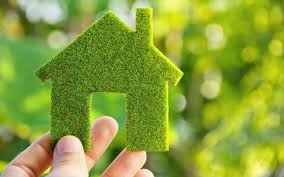In recent years, the construction industry has witnessed a substantial shift towards sustainability, driven by a rising awareness of environmental issues and an increasing demand for green living. According to the World Green Building Council, the global green building market is projected to reach $610 billion by 2025, highlighting the significant growth and investment potential in this sector. Additionally, a report by Dodge Data & Analytics revealed that 47% of global construction projects are expected to be green by 2021, demonstrating a clear trend towards sustainable building practices.
Embracing sustainability in construction is no longer a niche market but a mainstream approach that attracts investors looking to capitalize on the eco-conscious movement. Sustainable construction practices involve using environmentally responsible materials, energy-efficient designs, and innovative technologies that minimize the carbon footprint of new developments. This shift not only reduces the environmental impact but also enhances the health and well-being of occupants. For instance, green buildings, which often feature natural ventilation and ample daylight, have been shown to improve productivity and reduce energy costs by up to 30%.
As the world continues to prioritize sustainability, investing in green living and sustainable construction presents a promising opportunity for forward-thinking investors to support and profit from a more sustainable future. The experts from the industry will also shed some light on the immensely important topic:
Kaushal Mehta, Managing Director, Walplast
The construction industry is pivotal for global sustainability, with buildings responsible for 39% of global energy-related carbon emissions. This footprint stems from both operational energy use, which accounts for 28%, and embodied carbon emissions from materials and construction processes, which make up 11% (World Green Building Council). Utilizing technology to reduce waste and implementing recycling programs can significantly improve the industry’s environmental impact.
Achieving full sustainability in construction requires integrating sustainable practices throughout the entire process, from sourcing raw materials to manufacturing the final product. Leading companies ensure every step of the value chain aligns with sustainable principles, using life cycle analysis to assess the environmental impact from cradle to grave. This approach allows for informed decisions that minimize resource consumption, reduce emissions and optimize product performance, promoting sustainable construction practices and contributing to a greener future.
The use of recycled and repurposed materials in construction is gaining momentum. Products like Waterproof Putty and Self-curing Plaster, incorporating recycled materials and byproducts, exemplify this trend. These practices support a circular economy by reusing materials that would otherwise end up in landfills. Sustainable manufacturing processes, such as using renewable energy and eco-friendly materials like fly ash and slag cement, further enhance environmental sustainability. These methods reflect a significant shift towards greener construction.
With the construction technology market projected to reach $24 billion in the next decade, the industry’s optimization and improved processes signify a promising future for sustainable and green living investments.
Sridhar Samudrala, Founder & CEO , Hecta
The Indian real estate market is rapidly building towards sustainability, driven by increasing environmental awareness and the urgent need to address climate change. Developers and investors are increasingly focusing on green living as a key aspect of modern real estate.
Green buildings, which prioritize energy efficiency, water conservation, and sustainable materials, are becoming more prevalent. According to the Indian Green Building Council (IGBC), India has over 7.17 billion square feet of green building footprint, with more than 6,000 projects registered under various IGBC rating system. These structures not only reduce the environmental footprint but also offer long-term cost savings through reduced utility bills and maintenance expenses. The demand for such properties is rising, as more homebuyers and tenants prefer eco-friendly living spaces.
Investing in sustainable real estate is proving to be financially rewarding. Properties with green certifications often command higher rental yields and resale values. For instance, a studies have found that green buildings in India can command a rental premium of 2-8% compared to conventional buildings. Additionally, government incentives and policies promoting sustainable construction add to the attractiveness of green investments.
The future of real estate in India is undoubtedly green. By embracing sustainability, investors can contribute to environmental preservation while reaping significant economic benefits, making sustainability a fundamental aspect of the real estate landscape in India.
Mrinaal Mittal, Director, Unity Group
Embracing sustainability in real estate isn’t just a trend; it’s a fundamental shift that’s reshaping the industry’s future. Investing in green living means committing to environmentally responsible practices that benefit both the planet and the bottom line. As we see increasing awareness about climate change and resource depletion, the demand for sustainable living spaces is skyrocketing. Investors are recognizing that green buildings offer more than just reduced environmental impact; they also promise lower operating costs, higher tenant satisfaction, and greater resilience against regulatory changes.
The Indian Green Building Council (IGBC), by October 2023, had certified over 7,800 green buildings, with a target set at 10,000 by 2024. The data-driven projection of a $51.2 billion green building market and the certification of 10,000 green buildings by IGBC signal a sustained momentum towards sustainable practices.
Incorporating sustainable practices such as energy-efficient systems, renewable energy sources, and eco-friendly materials can significantly enhance property value. These elements not only attract environmentally conscious tenants but also cater to a growing segment of the market willing to pay a premium for sustainable living. Moreover, green buildings often enjoy financial incentives and favorable lending terms, making them an attractive proposition for investors.
The future of real estate lies in our ability to innovate and adopt sustainable practices. As we move towards a more eco-conscious society, the real estate sector must lead by example, ensuring that sustainability is at the core of development and investment strategies. By doing so, we can create a built environment that supports a healthier, more sustainable future for all.
Jai Raj Singh Shaktawat, COO, Last Mile Enterprises Ltd
Embracing sustainability in real estate is not merely a trend but a crucial step toward a more resilient and eco-friendly future.I’ve witnessed firsthand the transformative impact of integrating sustainable practices in construction. Sustainable real estate investments not only benefit the environment but also offer substantial financial advantages.
The future of green living lies in the adoption of advanced technologies and materials that optimize energy efficiency and reduce waste. For instance, innovative solutions like SunBless coating exemplify how we can achieve these goals. SunBless reflects solar radiation, significantly lowering indoor temperatures in hot climates while providing exceptional thermal insulation in colder regions. This dual functionality can lead to energy savings of up to 35%, proving that eco-friendly solutions can also be economically beneficial.
Moreover, sustainable buildings often feature waterproofing, anti-corrosive properties, and minimal VOC emissions, ensuring long-lasting performance and healthier indoor environments. As regulatory standards for green building become more stringent, investing in sustainable real estate is not just a responsible choice but a smart financial decision.
By prioritizing sustainability, we can create buildings that harmonize with their surroundings, reduce environmental impact, and enhance quality of life. This approach not only meets today’s needs but also safeguards the future for generations to come.




